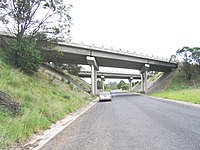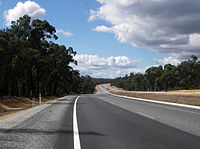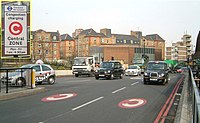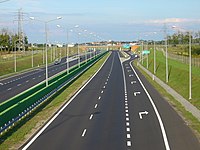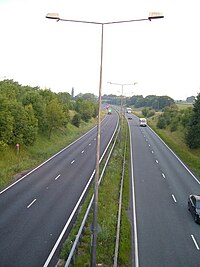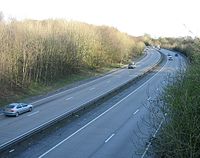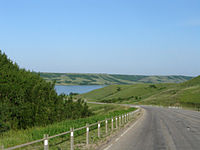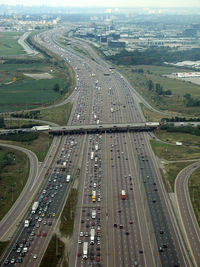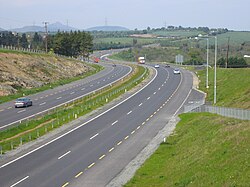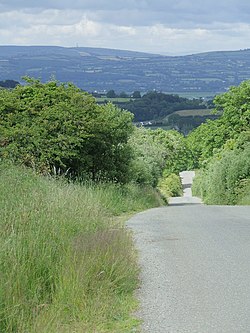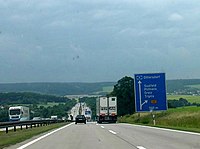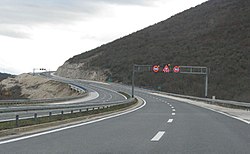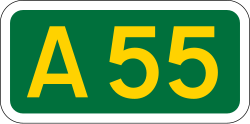Portal:Roads/Selected article
Selected article 1
Portal:Roads/Selected article/1
TheThe main alternative route is the Princes Highway which goes via the coast rather than inland.
Selected article 2
Portal:Roads/Selected article/2
ASelected article 3
Portal:Roads/Selected article/3
The road is mostly a federally funded
Selected article 4
Portal:Roads/Selected article/4
The London congestion charge is a fee for some motorists travelling within those parts of London designated as the Congestion Charge Zone (CCZ). The main objectives of this charge are to reduce congestion, and to raise funds for investment in London's transport system. The zone came into operation in parts of Central London on 17 February 2003 and it was extended into parts of west London on 19 February 2007. Although not the first scheme of its kind in the United Kingdom, it was the largest when it was introduced, and it remains one of the largest in the world. Worldwide, several cities have referenced the London scheme when considering their own possible schemes. A payment of £8 is required for each day a chargeable vehicle enters or travels within the zone between 7am and 6pm; a fine of between £60 and £180 is imposed for non-payment.The organisation responsible for the charge is
Selected article 5
Portal:Roads/Selected article/5
TheThroughout much of Canada, there are at least two routes designated as part of the Trans-Canada Highway. For example, in the western provinces, both the main Trans-Canada route and the Yellowhead Highway are part of the Trans-Canada system.
Selected article 6
Portal:Roads/Selected article/6
In English-speaking countries the term is used in the United Kingdom (a motorway is also called a traffordd (plural: traffyrdd) in Welsh), parts of Australia, New Zealand, Pakistan, some other Commonwealth nations, and Ireland (a motorway is also called a mótarbhealach (plural: mótarbhealaí) in Irish). In Ireland, a road built to motorway standard, but without the designation (and the regulations and traffic restrictions resulting from that designation), is known as a High-quality dual carriageway.
Selected article 7
Portal:Roads/Selected article/7
TheThe central motorway junction forms the intersection between the three major motorways of Auckland (
Selected article 8
Portal:Roads/Selected article/8
TheThe current route of the London section of the A1 road was (for the most part) designated as such in 1927. It comprises a number of historic streets in central London and the former suburbs of
Selected article 9
Portal:Roads/Selected article/9
TheIt was built to provide links between Stoke-on-Trent and the M6, before being extended to Nantwich. Construction has taken place over several stages, beginning in 1962, with the final section of the original route being completed similar to the original plans in 2006. As a
Selected article 10
Portal:Roads/Selected article/10
The .The first section of the PDR to be completed was the Southern Way Link Road between Newport Road (
Selected article 11
Portal:Roads/Selected article/11
The- Appia teritur regina longarum viarum
- "the Appian way is commonly said to be the queen of the long roads"
The road is named after Appius Claudius Caecus, the Roman censor who began and completed the first section as a military road to the south in 312 BC during the Samnite Wars.
Selected article 12
Portal:Roads/Selected article/12
Selected article 13
Portal:Roads/Selected article/13
On August 24, 2007, the stretch of highway between
Selected article 14
Portal:Roads/Selected article/14
The
The bridge’s construction broke three world records:
- The highest pylons in the world: pylons P2 and P3, 244.96 metres (803 ft 8 in) and 221.05 metres (725 ft 3 in) in height respectively.
- The highest mast in the world: the mast atop pylon P2 peaks at 343 metres (1,125 ft).
- The highest road bridge deck in the world, 270 m (890 ft) above the Tarn Riverat its highest point.
Selected article 15
Portal:Roads/Selected article/15
TheThe M54 spur connects the M6 motorway near Essington, Staffordshire with the A5 trunk road at Wellington, Shropshire. The motorway forms part of the strategic route to North Wales, roughly following the path of the Roman Watling Street and the A5 north-westwards, towards the port of Holyhead. It is the only motorway in Shropshire, and forms a vital part of the county's road network.
Selected article 16
Portal:Roads/Selected article/16
TheThe motorway, which was first proposed in the 1930s, and originally conceived as two separate routes, was built in stages between 1971 and 1976, with construction beginning at Pole Moor and finishing in Tarbock. The motorway also absorbed the northern end of the Stretford-Eccles bypass, which was built between 1957 and 1960. Adjusted for inflation to 2007, the motorway cost approximately £765 million to build. The motorway is relatively busy, with an average daily traffic flow of 100,000 cars in Yorkshire, and has several areas prone to gridlock, in particular, between Leeds and Huddersfield in West Yorkshire.
Selected article 17
Selected article 18
Portal:Roads/Selected article/18
TheThe road is a very busy commuter route, as it is the only dual carriageway passing through the south eastern suburbs of Dublin, as well as close to the many commuter towns along the east coast as far south as Gorey. Summer Friday and Sunday evenings also see very heavy traffic as Dubliners decamp to, and return from, their many holiday home locations along the Co. Wicklow and Co. Wexford coastlines.
Selected article 19
Portal:Roads/Selected article/19
There have been routes and trackways in Ireland connecting settlements and facilitating trade since ancient times and the country now has an extensive network of public roads connecting all parts of the country.The first routes in Ireland were
Selected article 20
Portal:Roads/Selected article/20
In most countries, it usually refers to the
Selected article 21
Portal:Roads/Selected article/21
The A1 motorway (Selected article 22
Portal:Roads/Selected article/22
The A55, also known as the North Wales Expressway (Welsh: Gwibffordd Gogledd Cymru) and the Chester to Bangor Trunk Road,[1] is a major road in Britain. Its entire length is a dual carriageway primary route, with the exception of the point where it crosses the Britannia Bridge over the Menai Strait and several short sections where there are gaps in between the two carriageways. All junctions are grade separated except for two roundabouts — one east of Penmaenmawr and one in Llanfairfechan. The road originally ran from Chester to Bangor but was extended parallel to the A5 across Anglesey to just outside Holyhead Docks in 2001. The road improvements have been part funded with European money, under the Trans-European Networks programme, as the route is designated part of Euroroute E22 (Holyhead - Leeds - Amsterdam - Hamburg - Malmö - Riga - Moscow - Perm - Ekaterinburg - Ishim). The A55 is sometimes called a motorway, because of its appearance, although it is not officially a motorway.Selected article 23
Selected article 24
Selected article 25
Usage
The layout design for these subpages is at Portal:Roads/Selected article/Layout.
- Add a new selected article to the next available subpage.
- Update "max=" to new total for its {{Random portal component}} on the main page.
- Please also feel free to add to the following portals as well: U.S. Roads - London transport and Transport
Feel free to directly add featured, A or GA class Roads content articles to the above list which are now rotated automatically through the portal.

